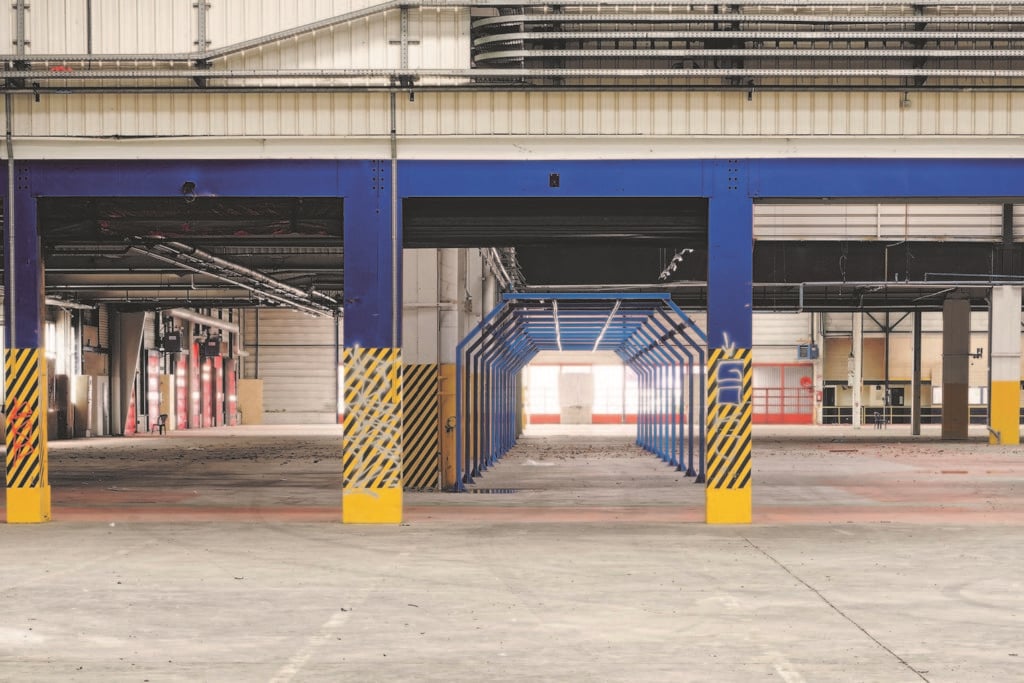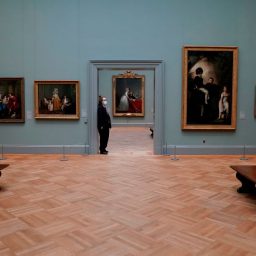Art Industry News is a daily digest of the most consequential developments coming out of the art world and art market. Here’s what you need to know this Wednesday, January 12.
NEED-TO-READ
The Met Is Giving Guards a Raise – The museum will increase the salaries of its security guards to ease staffing shortages caused by the pandemic. In recent weeks, around a third of its 430 galleries were closed due to staff illness caused largely by the Omicron variant. But the museum is also struggling with rehiring guards after sweeping layoffs in 2020, when the Met furloughed and then laid off around 120. (New York Times)
How Curators Are Reconsidering Racist Artwork Titles – In a 2019 exhibition at the Musée d’Orsay, Marie-Guillemine Benoist’s Portrait of a Negress (1800) was renamed Portrait of Madeleine after the model in the painting. “In reclaiming her name… the subject was to regain some measure of her humanity,” novelist Esi Edugyan writes. In the event that the title was chosen by the artist and not by the seller or purchaser of the work, which was sometimes the case, the issue is “thornier,” she says. Such ugly titles bear “witness to the ugliness of a time and mindset in which such epithets were an accepted and neutral thing.” (The Art Newspaper)
Drama Behind Closed Doors at the Lyon Biennale – François Bordry has quit as president of the Biennale de Lyon after four years leading the French organization because it came to light that the exhibition’s venue will be turned into a tram depot after the next edition, slated for September. “The Metropolis of Lyon leads a policy marked by a total lack of consultation with associations and institutions responsible for implementing cultural action,” Bordry said in a statement. The former Fagor-Brandt factory has hosted the contemporary art and dance biennale since 2017. (Le Quotidien d’Art)
How Losing His Fingers Changed a Sculptor’s Art – After losing several fingers in a table-saw accident, the sculptor John Powers was forced to radically change the way he works. Now, he is back in his studio near Beacon, New York, asking other artists to create surrealist, nonfunctional prosthetics for his missing fingers. “Art has given me a way to look at [my recovery],” he said, “and take part in this.” (NYT)
MOVERS & SHAKERS
Artists Named for Venice’s Egyptian Pavilion – Weaam El-Masry, Mohamed Shoukry, and Ahmed El-Shaer will represent Egypt at the 2022 Venice Biennale, which opens in April. The prominent contemporary artists are working on a project together called “Eden Like Garden” for the exhibition. (Ahram Online)
Art Institute of Chicago Employees Vote to Form a Union – Two hundred sixty-six Art Institute of Chicago employees, including art installers, curators, custodians, librarians and retail workers, successfully voted to form a union and achieved certification on Tuesday from the National Labor Relations Board. The group is seeking higher wages and better working conditions. (Chicago Tribune)
NEH Releases $24.7 Million in Grants – The U.S. National Endowment for the Humanities has announced 208 new grants for 2022 worth a total of $24.7 million. These include a $500,000 grant for the long-delayed LACMA renovation and $73,842 to help the Midwest Art Conservation Center in Minneapolis develop a risk assessment program for public art. (The Art Newspaper)
U.S. Artists Names a New CEO – The nonprofit funding body United States Artists has named Judilee Reed as its next president and CEO. Reed, who begins the role on May 1, currently serves as program director of creative communities for the William Penn Foundation in Philadelphia. (ARTnews)
FOR ART’S SAKE
Bug-Damaged Georgia O’Keeffe Goes Back on Display – A painting by the modernist painter is back on display at the Georgia O’Keeffe Museum after an extensive conservation that took 1,250 hours and cost $145,000. Spring (1948) was likely damaged by a tarantula tunneling in her New Mexico home. Now that’s an expensive bug! (AP)








